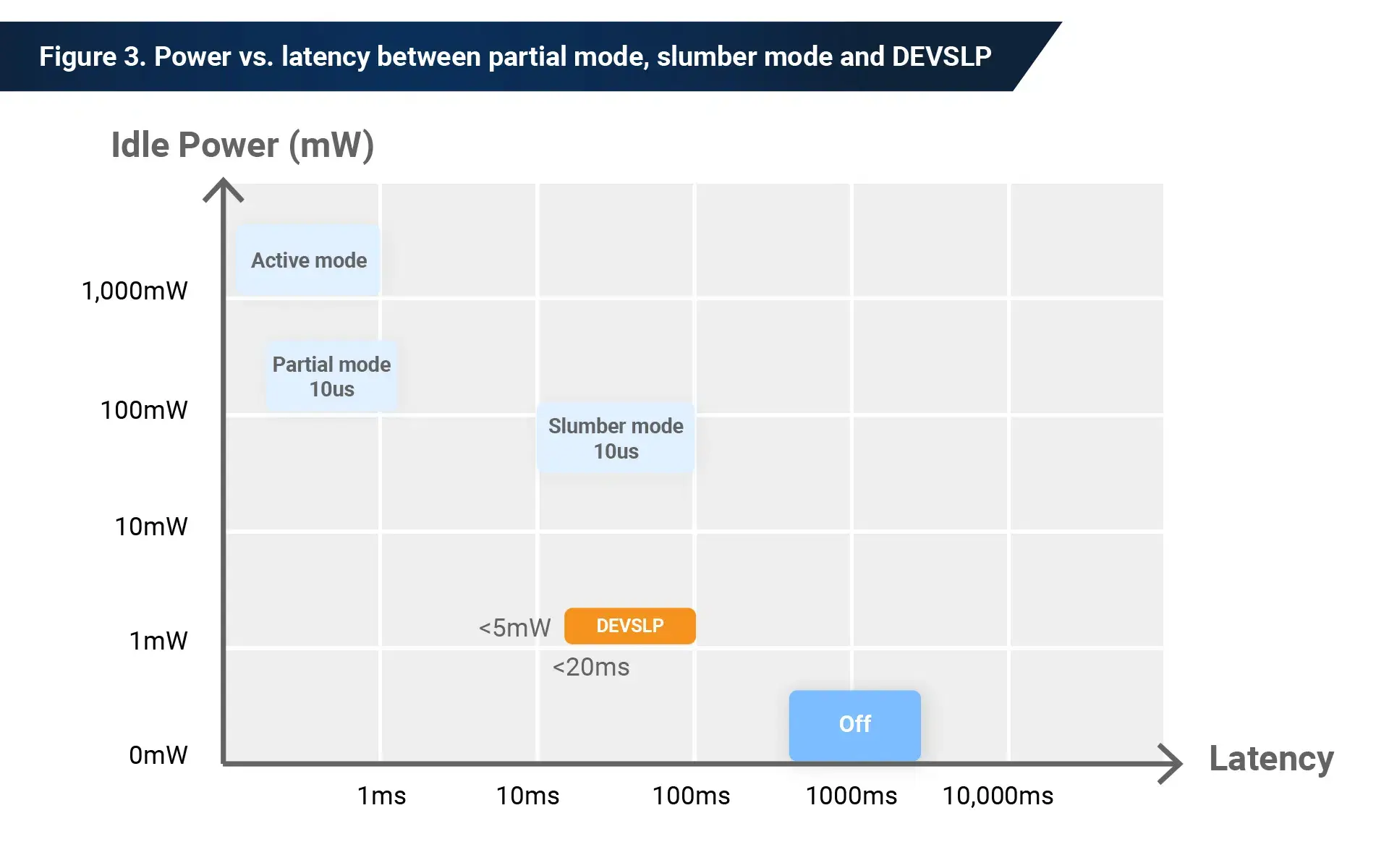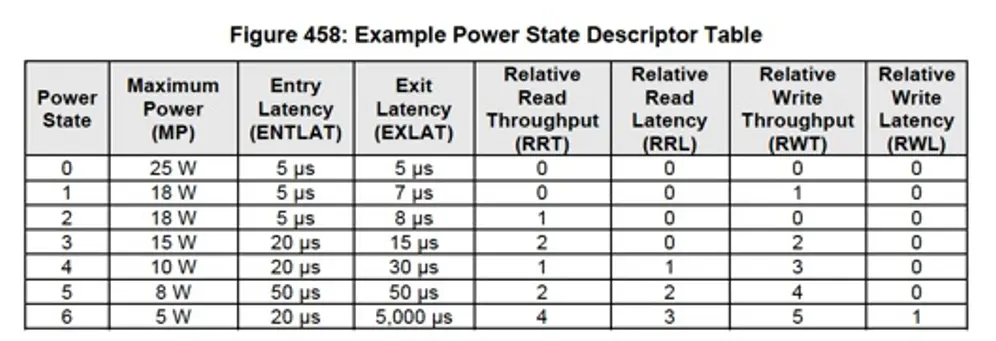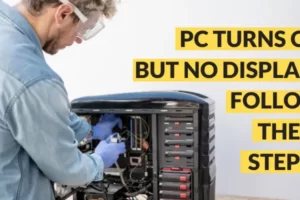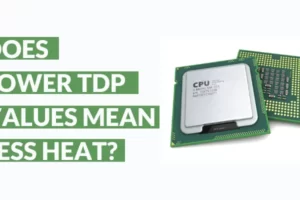Evaluating net power consumption is an important part of the PC building process.
If you are a beginner PC builder, there is a chance you may not pay a lot of attention to it.
But as you gain experience and get well-versed with different performance metrics, you will realize the importance of power consumption and related parameters like TDP.
In this article, we are discussing a query that I often get: Do SSDs use less power than HDDs?
SSDs consume significantly less power than HDDs owing to their spinning platter-based construction and operation. Even in idle states, when the HDD is not actively reading or writing data, the platter spins with the help of a motor, thereby consuming more power.
Roughly SSDs consume 10% less power than similarly sized devices.
The answer to the question is pretty straightforward, but the context is most important.
Even if you are an absolute beginner in pc building, I still want you to pay attention to the power consumption of different parts.
In the subsequent sections, you will learn precisely why you need to pay attention to power delivery and consumption and why SSDs consume so little power.
Why do HDDs Consume More Power?
Let’s go deeper and understand why HDDs consume more power than SSDs.
One of the biggest reasons HDDs consume more power than SSDs is their construction.
Although the design has seen a lot of iteration, HDDs still use rotating discs/platters and a read/write head to read, write and access data.
All the needed motions happen with the help of motors which consume the bulk of the power.
Compared with HDDs, the same read-write operations in SSDs happen over interconnected flash chips. This eliminates mechanically powered movements and makes data access insanely fast.
This ease of data access makes SSDs many times faster than HDDs.
Power consumption also depends upon the type of HDDs.
In desktop systems, commonly, 7200 rpm HDDs are used. Compared with 5400 rpm HDDs used in laptops, they consume more power.
The faster the disc rotates, the more will be power required.
Over time HDDs have seen many innovative design iterations. One chief concern that drove these innovations was the significant power footprint.
Therefore, modern HDDs, especially ones used in high-end server configurations, come with advanced power management, idle power modes, and spin-down timers.
While these features do an excellent job of optimizing the power used, they still don’t compare to an SSDs power draw.
For instance, a standard SATA SSD draws a maximum of 5W. M.2 SSDs, on the other hand, hit somewhere in the vicinity of 7-8W under load.
This graph by phisonblog shows power drawn by a SATA SSD in different power states.

When in idle mode, these SSDs can go as low as 10mW.
Some of these modern SSDs also have a low-power state where they draw close to just 3mW of power.
So, it’s obvious what game-changer SSDs are. And it’s no surprise modern laptops, and similar mobile devices like steam deck are keen on SSD-only development.
Replacing the HDD in your laptop with an SSD can increase its battery life on average by 45 minutes.
Advantages of SSDs over HDDs
Apart from consuming less power, here are the inherent advantages of SSDs over HDDs.
- SSDs are Faster
The most apparent advantage of SSDs is they are inherently faster. As I said, they use interconnected flash chips to store, read, and access data which is a much faster mechanism when compared to the mechanical movement of a read/write arm in an HDD.
With SSD in place, your PC/laptop will be visibly snappy and responsive.
Your applications and games will load faster. As a matter of fact, for games like GTA V that are optimized to use storage, SSDs can even provide a slight fps bump.
- Reliability in Operation
In addition to offering better performance, SSDs tend to last longer and are far more reliable than HDDs.
The operating principle of hard disks is purely mechanical, meaning there are many moving parts. Therefore, HDDs are more likely to develop faults faster when compared with SSDs.
Since SSDs do not deploy moving parts for operation, they have low chances of physical damage and are thus more robust.
SSDs can handle higher temps too. HDDs reach their performance peak at 40-45°C while SSDs are rated to operate at temperatures in the vicinity of 70°C.
- Better Lifespan
The lifespan of an SSD is also much better than an HDD’s. The metric that is used to gauge a storage device’s longevity is TBW or Total Bytes Written.
The TBW is usually calculated in terabytes or drive writes per day, including warranty length.
So, in addition to time-based warranties, storage devices are also rated based on writes they can take.
Most SSDs are rated for 200-600TB of write, and HDDs are rated for 150-300TB per year.
- Low Noise and Vibration.
Because of their mechanical operation, HDDs tend to produce significant noise and vibration.
You may not experience said noise and vibration on a simple everyday PC. But if you stack up several hard drives (in a server, for example), the vibration and noise produced are too big to ignore.
SSDs, on the other hand, operate in complete silence. So, if you want to build a super quiet PC, make SSDs a priority.
- Price
You may think SSDs are usually priced higher than HDDs; then how are SSDs advantageous in this aspect?
You are right; even today, you get more GBs on HDDs when compared with SSDs. And that is the main reason why HDDs are even relevant today.
As of today, I can see SSD space costing $0.10 per GB and HDDs costing $0.03 per GB.
Therefore, HDDs still are worth it for bulk and archival storage. That being said, it seems their days are numbered. SSDs are no more royalties, and their pricing has consistently declined.
HDD market share is quickly shifting from consumer space to NAS/server space. This makes sense because, for a PC, if you are conscious of your usage, even a 500GB SSD is sufficient.
NVMe VS SATA SSD Power Consumption Comparison
With SSDs, you have two options to choose from. A standard SATA drive that connects with your motherboard just like a hard drive would.
But researchers were aware that the SATA protocol inherently limits what you can extract from a tech like solid state drive.
And therefore NVMe drives are an eventual causality.
Let me quickly tell you the difference between a SATA and an NVMe solid-state drive.
SATA SSDs use the AHCI drivers that have been used by hard drives for a long time. NVMe drives use PCIe lanes to communicate between the system CPU and storage interface.
Regardless to say, NVMe drives are superior to SATA drives in performance.
Talking numbers, a SATA drive’s performance limit is 6GB/s and can offer a max throughput of 550MB/s.
A single PCIe 3.0 lane is capable of providing 1GB/s bidirectional throughput. Therefore, a PCIe 3×4 NVMe SSD can touch 4GB/s read/write speeds.
As you can see, the performance leap owing to the dedicated technology is enormous.
But what about the power draw? How do SATA and NVMe solid-state drives fare with each other regarding power draw?
When in operation SSDs perform in different power states.
In PCs, more often than not, low-power states are rarely used. This makes more power usage, but this also means more responsive operation.
But when it comes to laptops, where power management becomes essential, a whole domain of power states is used.
Here is a table by NVMe express that gives an overview of the power management of an NVMe drive.

So, it isn’t easy to give an absolute measure of power usage regarding SSDs.
Power usage changes with different drives, battery wear, platform used-laptop or desktop, type of usage, and workload.
2.5-inch SATA drives use 5V and use around 7.5W of power. M.2 SSDs use 3.3V and can carry a peak current of 3A taking their power to around 10W.
So SATA and M.2 drives can draw maximum power in the range of 7.5 – 10W.
In idle state, the power draw for desktop SSDs is 20-100mW and as low as ~5mW for laptops.
Sometimes if you compare the rated specs, you will find NVMe power draws higher. This is because manufacturers relay average read and write consumption. And the write power of NVMe SSDs is higher due to performance asymmetry.
Practically, NVMe SSDs top out at around 3.5W.
I know this can sound unclear, and as I said, too many factors are involved to make a concrete conclusion.
But the overall assessment is this, NVMe drives should be preferred over SATA and M.2 drives when it comes to mobile applications like laptops. Considering the entire range of power states, NVMe drives significantly reduce energy consumption.
A low-power draw directly correlates with less heat generated.
Now you know why manufacturers of mobile devices like laptops, steam decks, and PS5 are crazy about NVMe SSDs.
Importance of Power Calculation in Building PCs
So, why is power calculation necessary?
Well, for one, how much power your PC will consume will directly impact your electricity bill.
Secondly, the total power drawn across all components will dictate what wattage power supply you need.
If you don’t match the power needed by all the components with what your power supply can deliver, you are risking your components, and there is a good chance your PC won’t even work.
In some instances, this can even be hazardous.
Knowing the TDP of your CPU will help you decide what kind of cooling (air or water) will be needed for your CPU.
The CPU and the GPU are two of the most power-hungry hardware of a PC. While how much power they draw depends on what CPU and GPU you are using, high-quality CPUs and GPUs can draw 120 watts and 250 watts, respectively.
When it comes to a PC, the usual way to go is to have a power supply with more wattage than what you need.
Excess wattage headroom is necessary because if you add or replace parts in the future, you should be able to do that without needing to replace your power supply.
Additionally, power consumption in PCs is dynamic.
Simple tasks like browsing and answering emails don’t require a lot of power, but tasks like gaming, video editing, rendering, etc., that push resources to the limit need much more energy.
Therefore, calculating the total power required is crucial in building an optimized and effective PC.
I will tell you one more area where knowledge of power draw is essential. High-quality PC parts usually draw much less power than cheap components.
In a market riddled with duplicates and cheap parts, power draw becomes a good measure to estimate the quality.
Things get tricky with mobile and closed hardware like laptops, PS5, and steam deck.
Now with PCs, you may not bother about how much power components like HDDs, SSDs, and RAM draw.
As I said, you always choose a power supply with sufficient headroom.
But when it comes to mobile technology like laptops where battery efficiency becomes important, using an HDD instead of an SSD will cost you nearly 30 minutes of battery time.
When someone takes up the task of building a PC, especially for the first time, they tend to overlook this crucial aspect of power draw.
With this article, one of my aims, in addition to talking about SSDs, was to enable you to incorporate the understanding of power when building your PC.
As you now understand, a fundamental understanding of power consumption is essential not only to build an effective PC but to have a much more holistic understanding of what is going on within your system.
If you have any other questions, let me know in the comments.
Take care of yourselves, and I will see you at the next one!



